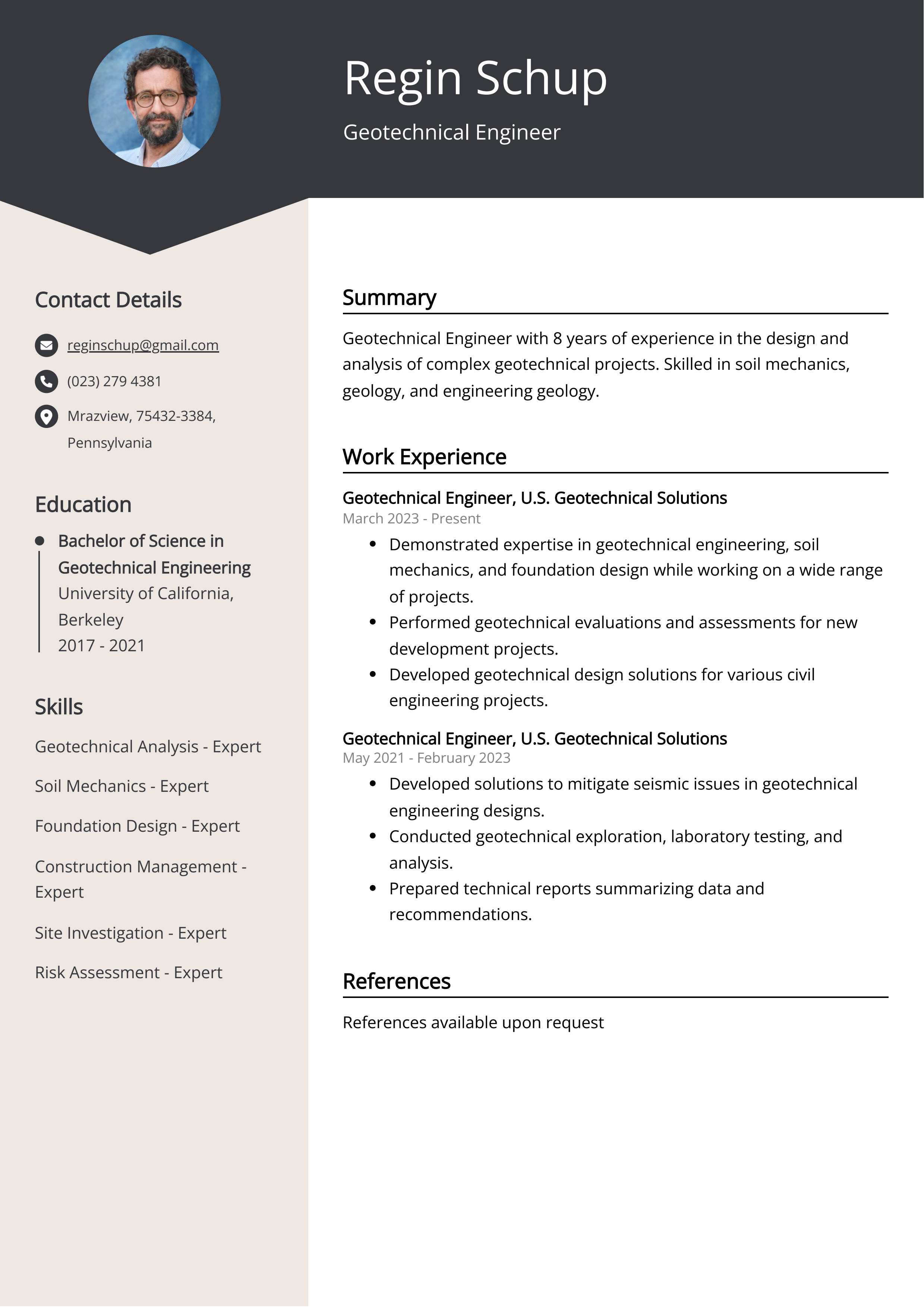The 20-Second Trick For Geotheta
Table of ContentsFacts About Geotheta RevealedGeotheta - QuestionsIndicators on Geotheta You Should KnowThe Greatest Guide To Geotheta
They team up with civil designers, structural designers, engineers, and various other professionals to incorporate geotechnical considerations into the overall task style and construction procedure. This needs efficient team effort, control, and interaction to make sure that the geotechnical aspects straighten with the task goals and fulfill regulatory needs.Mining & Products Design: Concepts of drilling, infiltration rates, and aspects affecting the choice of boring technique. Qualities of dynamites, shooting systems and blast patterns. Blowing up methods in surface and underground operations. Unique blowing up methods at excavation perimeters. Resonance and noise control. Mechanical and constant strategies to fragmentation, consisting of longwall shearing and fullface boring.
Modelling of fragment and fragment size distributions; comminution as a transfer feature. Comminution modern technology: crushing, grinding, dimension classification. Integrated analysis of fragmentation and comminution procedures. Provided by: Mining & Materials Design.
The Geotheta Statements
Bachelor's degree programs in civil, geotechnical, geological, and environmental engineering commonly last 4 years and consist of general education courses in English, social science, and the liberal arts, as well as programs in innovative maths, structural geology, and liquid mineralogy. (https://trello.com/u/geotheta)
Geotechnical engineering entails the assessment of the dirt and rock conditions at a specific website, and their effects for the advancement of that site. As most frameworks depend on the ground for assistance, it lacks surprise that a detailed understanding of the ground conditions, and the viability of foundation systems, are crucial to the long-term stability and performance of the building or framework.
The geotechnical team at Douglas Partners routinely speak with engineers, design designers, designers, and home builders to make recommendations on style and development proposals to guarantee that the developed frameworks are accordingly made for the ground problems. As an example, the style of footing systems needs to think about the weight of the structure, the capability of the ground to support that weight together with activity resistances and effective building and construction.
Little Known Facts About Geotheta.
This job is substantially streamlined by the use our Douglas Map geospatial system that makes this information conveniently obtainable in a simple to use internet internet browser user interface. A geotechnical designer will route the drilling of boreholes and test pits to accumulate soil and other examples, and additionally examine surface attributes and ground exposures to form a geotechnical model of the subsurface conditions.
Depending on the task type and ground problems experienced, lab screening may amongst various other things examine toughness, compressibility, sensitivity and/or permeability of soil and rock samples. Hereafter data is accumulated and looked at, the outcomes are used for a geotechnical version of the website, which is normally offered as areas across the site.

A geotechnical investigation by nature can only assess the ground conditions at the locations drilled or excavated. Natural variants in soil and rock conditions can take place throughout a website and in between examination places. It is therefore good practice that the geotechnical engineer be retained throughout building and construction of the project to offer on-site confirmation that a fantastic read the ground conditions run into follow the expectations and advice offered in the geotechnical investigation report.
The 8-Minute Rule for Geotheta
Geotechnical engineers use their in-depth expertise of dirt and rock to evaluate danger and solve problems on varied facilities projectsGeotechnical design is a specialist branch of civil design which checks out the behavior of earth products and the application of soil and rock technicians. Consulting Engineer. As a geotechnical designer, you will evaluate the physical, mechanical and chemical properties of dirt and rock in order to develop foundations, retaining frameworks and earthworks
Geotechnical design is very closely connected to and overlaps with, both engineering geology and ground design - https://www.openstreetmap.org/user/geotheta. It's possible to specialise in geotechnics or benefit a geotechnical business yet be called an engineering geologist or a ground designer. As a geotechnical engineer, you'll require to: develop and keep connections with customers and other experts associated with the site, throughout each projectmaintain safety criteria on website bear in mind cost implications when you make recommendationsstudy geological maps and airborne photos from a series of resources and from various time periodsexamine construction intends to see just how possible they are based on your understanding of the siteinvestigate risks or geological hazards for the sitesearch for eco delicate attributes, such as garbage dump begin to establish accurate and interpretive ground modelsplan field investigationsdrill and evaluate examples of bedrock, soil, groundwater and added products oversee various other experts on sitesolve technical problems as they emerge, such as unforeseen structures at drill sitesmonitor conditions during and after building to make sure structures are stable in the brief and lengthy termadding information accumulated on website to your preliminary researchcreating geotechnical calculations, illustrations, and 2 or three-dimensional computer versions interpreting the datamaking referrals about the proposed usage of the website

Comments on “The Buzz on Geotheta”